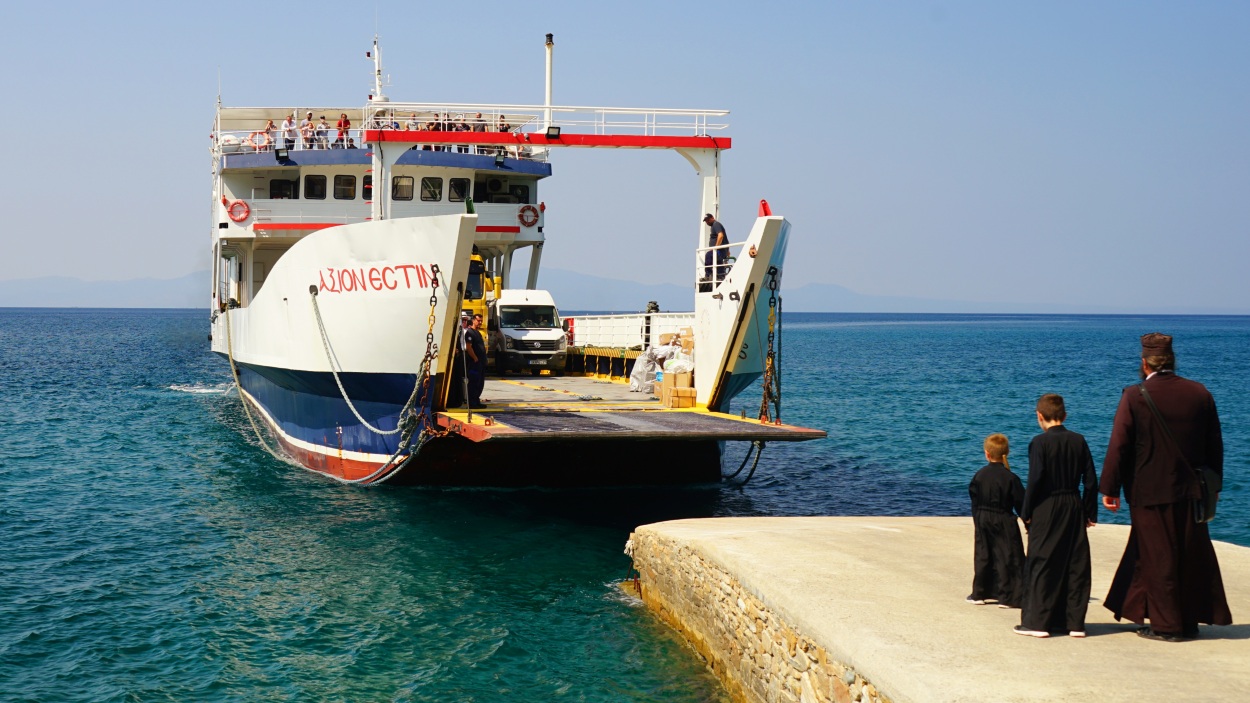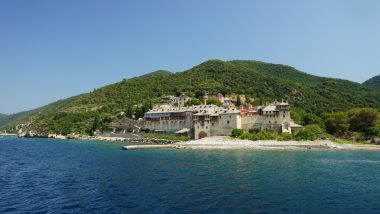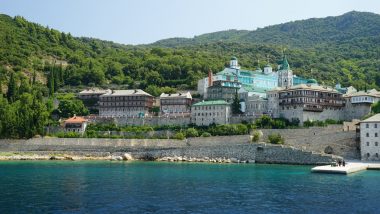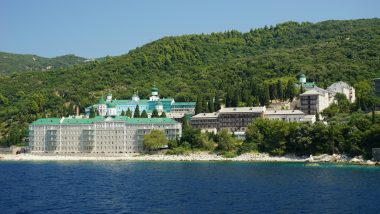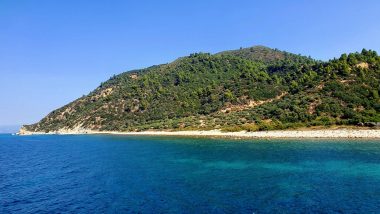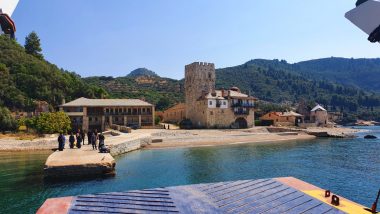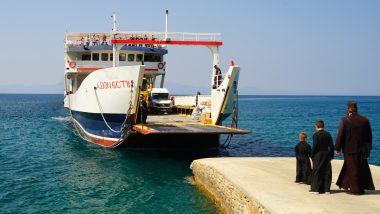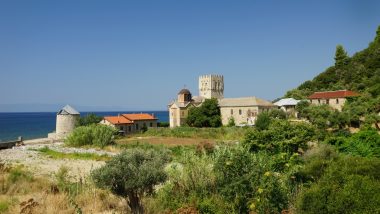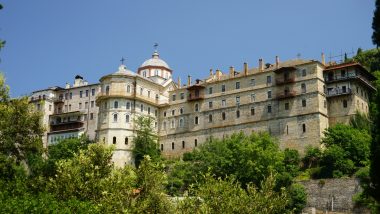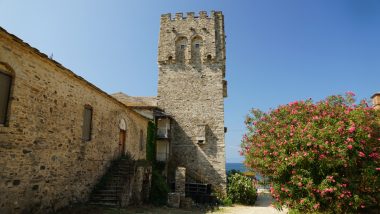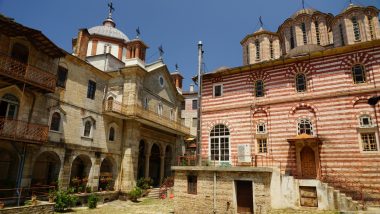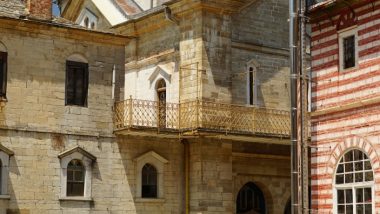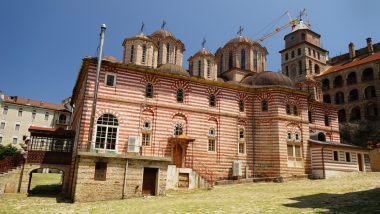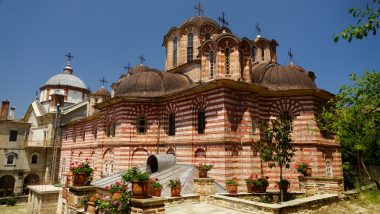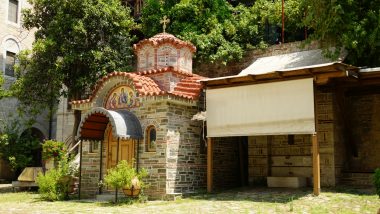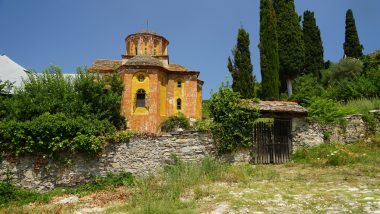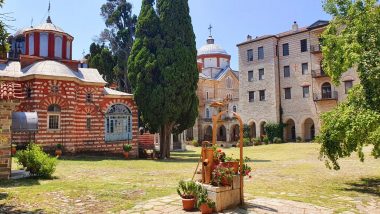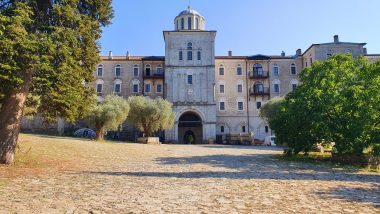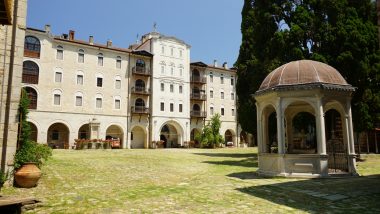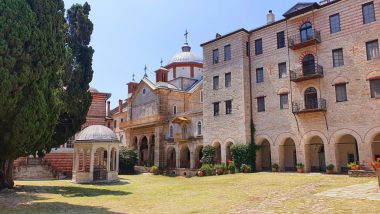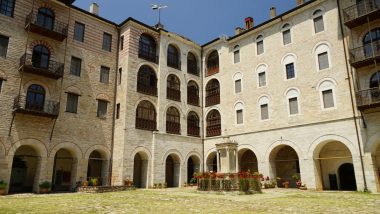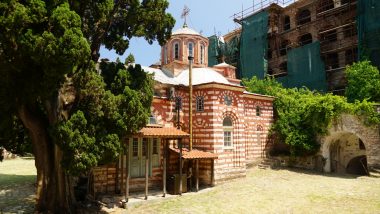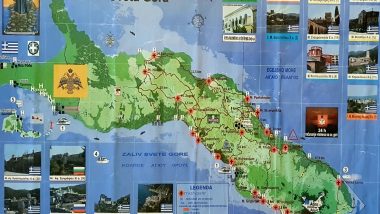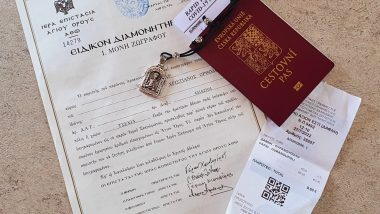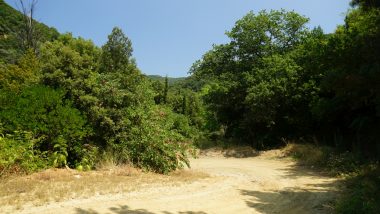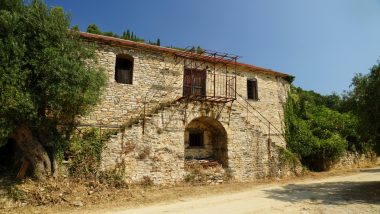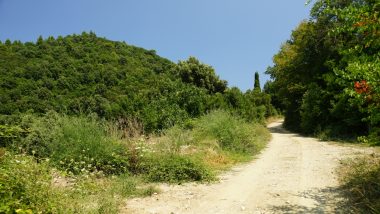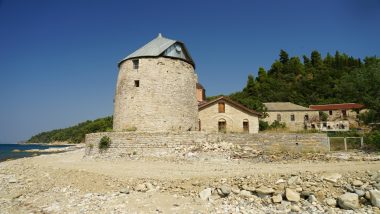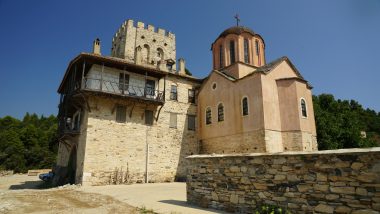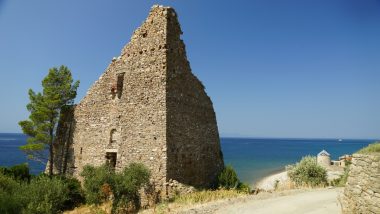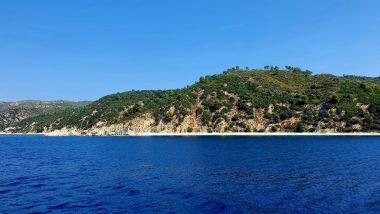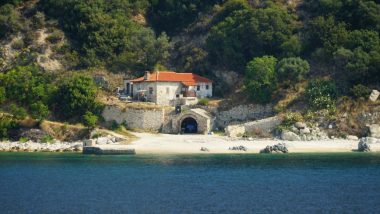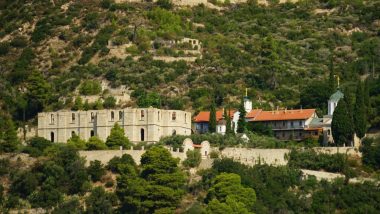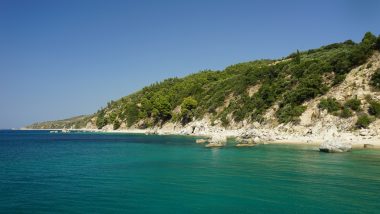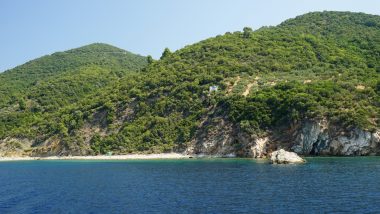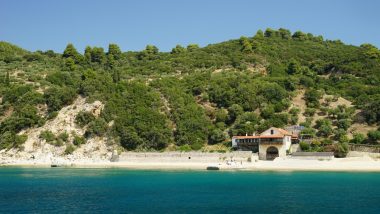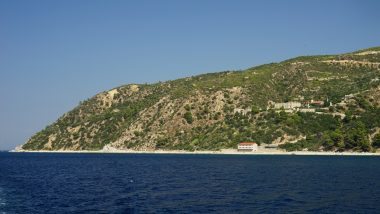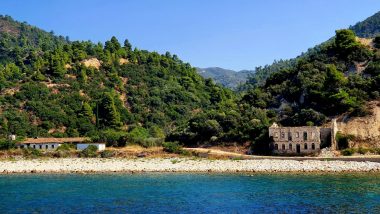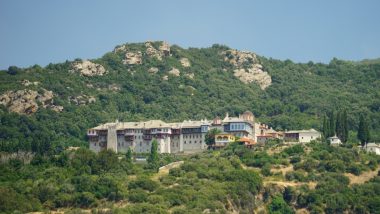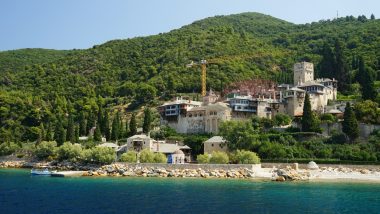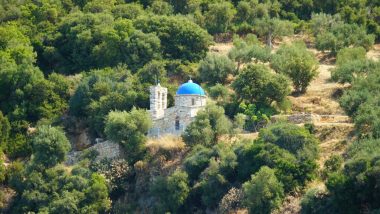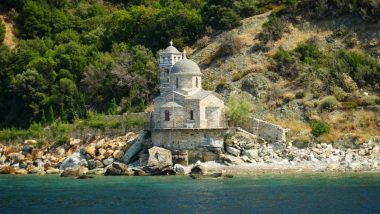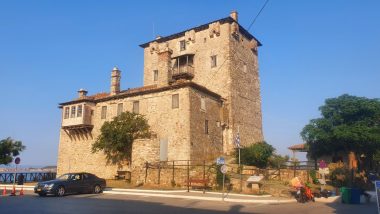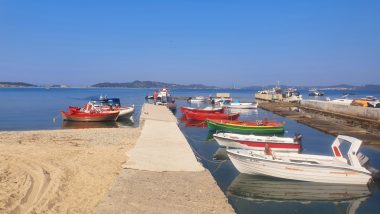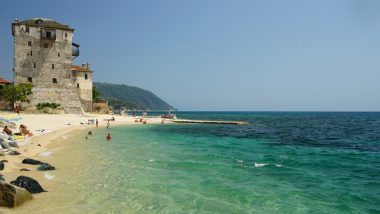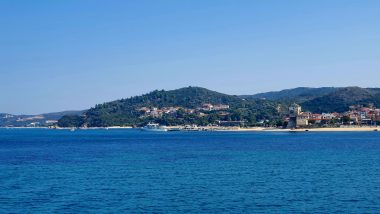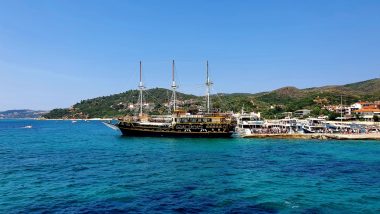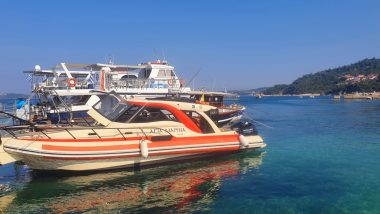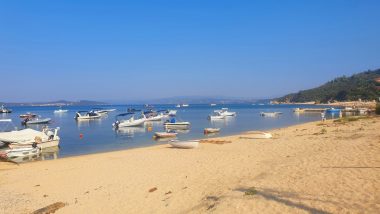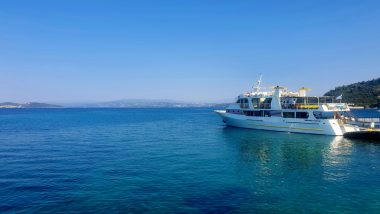Cloaked by beautiful Mediterranean forest, the steep slopes of Mount Athos are punctuated by twenty imposing monasteries and their subsidiary establishments. Covering an area of just over 33000 hectares, the property includes the entire narrow rocky strip of the easternmost “finger” of Chalkidiki. This Orthodox spiritual center has enjoyed a self-administered status since Byzantine times. Its first constitution was signed in 972 by the emperor John I Tzimiskes. The layout of the monasteries (which are presently inhabited by some 1400 monks) had an influence as far afield as Russia, and its school of painting influenced the history of Orthodox art. The landscape reflects traditional monastic farming practices, which maintain populations of plant species that have now become rare in the region.
Visiting Athos is not a simple procedure. First of all, only men are permitted to enter Mount Athos. Although Mount Athos is legally part of the European Union like the rest of Greece, the Monastic community institutions have a special jurisdiction which was reaffirmed during the admission of Greece to the European Community. This empowers the monastic community’s authorities to regulate the free movement of people and goods in its territory. Everybody, whether orthodox or not, must obtain a permit called a “Diamonitirion” to enter the Athos peninsula, which has a border controlled by Greek police. Permits valid for 4 days are issued daily for 10 non-orthodox visitors and 100 Greeks and orthodox visitors. You must do a reservation up to six months in advance, the earlier the better. We were lucky, because we got direct invitations from a few monasteries, so our permit was issued within 24 hours.
The next morning we made a free COVID-19 rapid test, then we registered with the Greek police and picked up our permit “Diamonitirion” to enter (🎫 25 EUR), and then we bought a ferry ticket (🎫 9,50 EUR) for the boat at 09:45 to Zografou monastery, where we have registered for overnight.
The Holy Monastery of Zografou is hidden on a wooded hillside on the southwestern side of the Athos peninsula. According to tradition, its founders were three monks: Moses, Aaron, and John, from Ochrid, who became monks of the Holy Mountain in the 10th century. The Monastery is dedicated to St George, of whom it preserves an old icon, not painted by human hand, which is one of its most valued treasures. It is believed that in the 13th century Zografou became a largely Bulgarian foundation. At the end of the same century, 26 monks of Zografou suffered a martyr’s death, for which Emperor Michael VIII and Patriarch Beccus were responsible, for opposing the union of the Eastern and Western churches and the pro-union policy of the political and ecclesiastical authorities. A cenotaph was set up in 1873 in memory of these Zografou martyrs. Zografou was afflicted by raids by Catalan pirates. But recovered quickly with the help of grants and support from the Palaeologue Emperors and the princes of the Danubian Provinces. In the 15th century, Stephen the Good played a decisive role in aid to the Monastery and gave it a number of smaller monastic houses. Zografou had metochion in parts of Romania, Bulgaria, Russia, and Turkey, but retains today only those which are in Greece. Up to the early 19th century, monks of Greek and Serbian origin lived together with the Bulgarians at the Monastery, but from 1845 onwards it has been purely Bulgarian.
You will get there free accommodation in nice rooms with a shared bathroom in the building outside the monastery, if you are non-orthodox, they will allow you to see the church, but you can’t join the service at 18:00 and 04:00. Two vegetarian meals are served in the dining hall for visitors. It’s not allowed to take photographs of monks or churches inside.
Ouranoupoli
Parking location – Ouranoupoli: 40.324814N 23.983616E (🅿️ – 10 EUR / 24 hrs)


